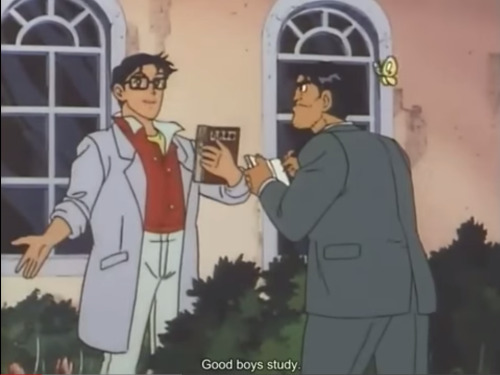:)
:)



More Posts from Smparticle2 and Others







Rabies Viruses Reveal Wiring in Transparent Brains
Scientists under the leadership of the University of Bonn have harnessed rabies viruses for assessing the connectivity of nerve cell transplants. Coupled with a green fluorescent protein, the viruses show where replacement cells engrafted into mouse brains have connected to the host neural network.
The research is in Nature Communications. (full open access)
Why Webb Needs to Chill
Our massive James Webb Space Telescope is currently being tested to make sure it can work perfectly at incredibly cold temperatures when it’s in deep space.
How cold is it getting and why? Here’s the whole scoop…
Webb is a giant infrared space telescope that we are currently building. It was designed to see things that other telescopes, even the amazing Hubble Space Telescope, can’t see.

Webb’s giant 6.5-meter diameter primary mirror is part of what gives it superior vision, and it’s coated in gold to optimize it for seeing infrared light.

Why do we want to see infrared light?
Lots of stuff in space emits infrared light, so being able to observe it gives us another tool for understanding the universe. For example, sometimes dust obscures the light from objects we want to study – but if we can see the heat they are emitting, we can still “see” the objects to study them.
It’s like if you were to stick your arm inside a garbage bag. You might not be able to see your arm with your eyes – but if you had an infrared camera, it could see the heat of your arm right through the cooler plastic bag.

Credit: NASA/IPAC
With a powerful infrared space telescope, we can see stars and planets forming inside clouds of dust and gas.

We can also see the very first stars and galaxies that formed in the early universe. These objects are so far away that…well, we haven’t actually been able to see them yet. Also, their light has been shifted from visible light to infrared because the universe is expanding, and as the distances between the galaxies stretch, the light from them also stretches towards redder wavelengths.
We call this phenomena “redshift.” This means that for us, these objects can be quite dim at visible wavelengths, but bright at infrared ones. With a powerful enough infrared telescope, we can see these never-before-seen objects.

We can also study the atmospheres of planets orbiting other stars. Many of the elements and molecules we want to study in planetary atmospheres have characteristic signatures in the infrared.

Because infrared light comes from objects that are warm, in order to detect the super faint heat signals of things that are really, really far away, the telescope itself has to be very cold. How cold does the telescope have to be? Webb’s operating temperature is under 50K (or -370F/-223 C). As a comparison, water freezes at 273K (or 32 F/0 C).
How do we keep the telescope that cold?
Because there is no atmosphere in space, as long as you can keep something out of the Sun, it will get very cold. So Webb, as a whole, doesn’t need freezers or coolers - instead it has a giant sunshield that keeps it in the shade. (We do have one instrument on Webb that does have a cryocooler because it needs to operate at 7K.)

Also, we have to be careful that no nearby bright things can shine into the telescope – Webb is so sensitive to faint infrared light, that bright light could essentially blind it. The sunshield is able to protect the telescope from the light and heat of the Earth and Moon, as well as the Sun.

Out at what we call the Second Lagrange point, where the telescope will orbit the Sun in line with the Earth, the sunshield is able to always block the light from bright objects like the Earth, Sun and Moon.

How do we make sure it all works in space?
By lots of testing on the ground before we launch it. Every piece of the telescope was designed to work at the cold temperatures it will operate at in space and was tested in simulated space conditions. The mirrors were tested at cryogenic temperatures after every phase of their manufacturing process.

The instruments went through multiple cryogenic tests at our Goddard Space Flight Center in Maryland.

Once the telescope (instruments and optics) was assembled, it even underwent a full end-to-end test in our Johnson Space Center’s giant cryogenic chamber, to ensure the whole system will work perfectly in space.

What’s next for Webb?
It will move to Northrop Grumman where it will be mated to the sunshield, as well as the spacecraft bus, which provides support functions like electrical power, attitude control, thermal control, communications, data handling and propulsion to the spacecraft.

Learn more about the James Webb Space Telescope HERE, or follow the mission on Facebook, Twitter and Instagram.
Make sure to follow us on Tumblr for your regular dose of space: http://nasa.tumblr.com.

“I was on a leadership team in 5th grade. At the end of the year we were supposed to take a trip to Washington DC. We held fundraisers and everything. But when it was time to go, I didn’t have the identification papers to buy a plane ticket. So our teacher Ms. Rivera decided that we’d take a bus. Just so I could go too. That trip changed my life. It made me want to be a lawyer. And Ms. Rivera became one of the closest people in my life. She always kept in touch. She basically watched me grow up. One time in high school I got in a huge fight with my mom, and Ms. Rivera came and took me on a long car ride. I started to tell her everything. I told her about a recent break-up, and how I smoked weed, and ‘I did this,’ and ‘I did that.’ She just listened to everything. Then she started telling me about her life too. She told me that she’d been in an abusive relationship. I’d always thought her life was perfect because she was a guidance counselor. But she’d been through so much too. When it was came time to apply for college, Ms. Rivera was the one who helped me apply for DACA. She told me about the TheDream.us scholarship. I didn’t even want to apply. I was ready to give up. I’d just accepted that I’d always work in restaurants like my mom. But Ms. Rivera made me apply. She said: ‘What happened to that girl who wanted to be a lawyer?’ I learned that I got the scholarship in February. They’re paying for my entire college. Ms. Rivera was so proud of me. She kept saying: ‘I told you so.’”




“That is the one unforgivable sin in any society. Be different and be damned!” -Rhett Butler

Women at work on a C-47 Douglas cargo transport, Douglas Aircraft Company, Long Beach, California, 1943.
via reddit
Spacewalk Recap Told in GIFs
Friday, Oct. 20, NASA astronauts Randy Bresnik and Joe Acaba ventured outside the International Space Station for a 6 hour and 49 minute spacewalk. Just like you make improvements to your home on Earth, astronauts living in space periodically go outside the space station to make updates on their orbiting home.
During this spacewalk, they did a lot! Here’s a recap of their day told in GIFs…
All spacewalks begin inside the space station. Astronauts Paolo Nespoli and Mark Vande Hei helped each spacewalker put on their suit, known as an Extravehicular Mobility Unit (EMU).

They then enter an airlock and regulate the pressure so that they can enter the vacuum of space safely. If they did not regulate the pressure safely, the astronauts could experience something referred to as “the bends” – similar to scuba divers.
Once the two astronauts exited the airlock and were outside the space station, they went to their respective work stations.

Bresnik replaced a failed fuse on the end of the Dextre robotic arm extension, which helps capture visiting vehicles.

During that time, Acaba set up a portable foot restraint to help him get in the right position to install a new camera.

While he was getting set up, he realized that there was unexpected wearing on one of his safety tethers. Astronauts have multiple safety mechanisms for spacewalking, including a “jet pack” on their spacesuit. That way, in the unlikely instance they become untethered from the station, the are able to propel back to safety.

Bresnik was a great teammate and brought Acaba a spare safety tether to use.

Once Acaba secured himself in the foot restraint that was attached to the end of the station’s robotic arm, he was maneuvered into place to install a new HD camera. Who was moving the arm? Astronauts inside the station were carefully moving it into place!
And, ta da! Below you can see one of the first views from the new enhanced HD camera…(sorry, not a GIF).

After Acaba installed the new HD camera, he repaired the camera system on the end of the robotic arm’s hand. This ensures that the hand can see the vehicles that it’s capturing.

Bresnik, completed all of his planned tasks and moved on to a few “get ahead” tasks. He first started removing extra thermal insulation straps around some spare pumps. This will allow easier access to these spare parts if and when they’re needed in the future.

He then worked to install a new handle on the outside of space station. That’s a space drill in the above GIF.

After Acaba finished working on the robotic arm’s camera, he began greasing bearings on the new latching end effector (the arm’s “hand”), which was just installed on Oct. 5.

The duo completed all planned spacewalk tasks, cleaned up their work stations and headed back to the station’s airlock.

Once safely inside the airlock and pressure was restored to the proper levels, the duo was greeted by the crew onboard.

They took images of their spacesuits to document any possible tears, rips or stains, and took them off.

Coverage ended at 2:36 p.m. EDT after 6 hours and 49 minutes. We hope the pair was able to grab some dinner and take a break!
You can watch the entire spacewalk HERE, or follow @Space_Station on Twitter and Instagram for regular updates on the orbiting laboratory.
Make sure to follow us on Tumblr for your regular dose of space: http://nasa.tumblr.com.

How to Make a Motor Neuron
A team of scientists has uncovered details of the cellular mechanisms that control the direct programming of stem cells into motor neurons. The scientists analyzed changes that occur in the cells over the course of the reprogramming process. They discovered a dynamic, multi-step process in which multiple independent changes eventually converge to change the stem cells into motor neurons.
“There is a lot of interest in generating motor neurons to study basic developmental processes as well as human diseases like ALS and spinal muscular atrophy,” said Shaun Mahony, assistant professor of biochemistry and molecular biology at Penn State and one of the lead authors of the paper. “By detailing the mechanisms underlying the direct programing of motor neurons from stem cells, our study not only informs the study of motor neuron development and its associated diseases, but also informs our understanding of the direct programming process and may help with the development of techniques to generate other cell types.”
The direct programming technique could eventually be used to regenerate missing or damaged cells by converting other cell types into the missing one. The research findings, which appear online in the journal Cell Stem Cell on December 8, 2016, show the challenges facing current cell-replacement technology, but they also outline a potential pathway to the creation of more viable methods.
“Despite having a great therapeutic potential, direct programming is generally inefficient and doesn’t fully take into account molecular complexity,” said Esteban Mazzoni, an assistant professor in New York University’s Department of Biology and one of the lead authors of the study. “However, our findings point to possible new avenues for enhanced gene-therapy methods.”
The researchers had shown previously that they can transform mouse embryonic stem cells into motor neurons by expressing three transcription factors – genes that control the expression of other genes – in the stem cells. The transformation takes about two days. In order to better understand the cellular and genetic mechanisms responsible for the transformation, the researchers analyzed how the transcription factors bound to the genome, changes in gene expression, and modifications to chromatin at 6-hour intervals during the transformation.
“We have a very efficient system in which we can transform stem cells into motor neurons with something like a 90 to 95 percent success rate by adding the cocktail of transcription factors,” said Mahony. “Because of that efficiency, we were able to use our system to tease out the details of what actually happens in the cell during this transformation.”
“A cell in an embryo develops by passing through several intermediate stages,” noted Uwe Ohler, senior researcher at the Max Delbrück Center for Molecular Medicine (MDC) in Berlin and one of the lead authors of the work. “But in direct programming we don’t have that: we replace the gene transcription network of the cell with a completely new one at once, without the progression through intermediate stages. We asked, what are the timing and kinetics of chromatin changes and transcription events that directly lead to the final cell fate?“
The research team found surprising complexity – programming of these stem cells into neurons is the result of two independent transcriptional processes that eventually converge. Early on in the process, two of the transcription factors – Isl1 and Lhx3 – work in tandem, binding to the genome and beginning a cascade of events including changes to chromatin structure and gene expression in the cells. The third transcription factor, Ngn2, acts independently making additional changes to gene expression. Later in the transformation process, Isl1 and Lhx3 rely on changes in the cell initiated by Ngn2 to help complete the transformation. In order for direct programming to successfully achieve cellular conversion, it must coordinate the activity of the two processes.
“Many have found direct programming to be a potentially attractive method as it can be performed either in vitro – outside of a living organism – or in vivo – inside the body and, importantly, at the site of cellular damage,” said Mazzoni. “However, questions remain about its viability to repair cells – especially given the complex nature of the biological process. Looking ahead, we think it’s reasonable to use this newly gained knowledge to, for instance, manipulate cells in the spinal cord to replace the neurons required for voluntary movement that are destroyed by afflictions such as ALS.”

Engineers build world’s lightest mechanical watch thanks to graphene
An ultralight high-performance mechanical watch made with graphene is unveiled today in Geneva at the Salon International De La Haute Horlogerie thanks to a unique collaboration.
The University of Manchester has collaborated with watchmaking brand Richard Mille and McLaren F1 to create world’s lightest mechanical chronograph by pairing leading graphene research with precision engineering.
The RM 50-03 watch was made using a unique composite incorporating graphene to manufacture a strong but lightweight new case to house the delicate watch mechanism. The graphene composite known as Graph TPT weighs less than previous similar materials used in watchmaking.
Graphene is the world’s first two-dimensional material at just one-atom thick. It was first isolated at The University of Manchester in 2004 and has the potential to revolutionise a large number of applications including, high-performance composites for the automotive and aerospace industries, as well as flexible, bendable mobile phones and tablets and next-generation energy storage.
Read more.
Moonlight









-
 martina86 liked this · 1 year ago
martina86 liked this · 1 year ago -
 ortelga liked this · 5 years ago
ortelga liked this · 5 years ago -
 romeoandme liked this · 7 years ago
romeoandme liked this · 7 years ago -
 prometheus-adam liked this · 7 years ago
prometheus-adam liked this · 7 years ago -
 exprobictensumutopia liked this · 7 years ago
exprobictensumutopia liked this · 7 years ago -
 eclectic-like-furniture liked this · 8 years ago
eclectic-like-furniture liked this · 8 years ago -
 headcaseinjuly27 liked this · 8 years ago
headcaseinjuly27 liked this · 8 years ago -
 coreywu36 liked this · 8 years ago
coreywu36 liked this · 8 years ago -
 gettothedancing reblogged this · 8 years ago
gettothedancing reblogged this · 8 years ago -
 thefieldalongtheroses liked this · 8 years ago
thefieldalongtheroses liked this · 8 years ago -
 tv-teachermothersecretlover reblogged this · 8 years ago
tv-teachermothersecretlover reblogged this · 8 years ago -
 purpleiceflame reblogged this · 8 years ago
purpleiceflame reblogged this · 8 years ago -
 diabolicald liked this · 8 years ago
diabolicald liked this · 8 years ago -
 jessicafoxiii reblogged this · 8 years ago
jessicafoxiii reblogged this · 8 years ago -
 jessicafoxiii liked this · 8 years ago
jessicafoxiii liked this · 8 years ago -
 youhealmyachingheart reblogged this · 8 years ago
youhealmyachingheart reblogged this · 8 years ago -
 friendraichu reblogged this · 8 years ago
friendraichu reblogged this · 8 years ago -
 yvette liked this · 8 years ago
yvette liked this · 8 years ago -
 witchpuddin liked this · 8 years ago
witchpuddin liked this · 8 years ago -
 lifearoofiecircle liked this · 8 years ago
lifearoofiecircle liked this · 8 years ago -
 bonesawcowboy liked this · 8 years ago
bonesawcowboy liked this · 8 years ago -
 block-blockad reblogged this · 8 years ago
block-blockad reblogged this · 8 years ago -
 naurunalle reblogged this · 8 years ago
naurunalle reblogged this · 8 years ago -
 sipral reblogged this · 8 years ago
sipral reblogged this · 8 years ago -
 samsasunshine liked this · 8 years ago
samsasunshine liked this · 8 years ago -
 acvalentine liked this · 8 years ago
acvalentine liked this · 8 years ago -
 gupdoo3 liked this · 8 years ago
gupdoo3 liked this · 8 years ago -
 iam-meg-go liked this · 8 years ago
iam-meg-go liked this · 8 years ago -
 porksweats reblogged this · 8 years ago
porksweats reblogged this · 8 years ago -
 porksweats liked this · 8 years ago
porksweats liked this · 8 years ago -
 marcantoinejoly liked this · 8 years ago
marcantoinejoly liked this · 8 years ago -
 itsnaynaymofo reblogged this · 8 years ago
itsnaynaymofo reblogged this · 8 years ago -
 tacobellmcgrande reblogged this · 8 years ago
tacobellmcgrande reblogged this · 8 years ago -
 condorconman liked this · 8 years ago
condorconman liked this · 8 years ago -
 michelleyelleyinthelib reblogged this · 8 years ago
michelleyelleyinthelib reblogged this · 8 years ago